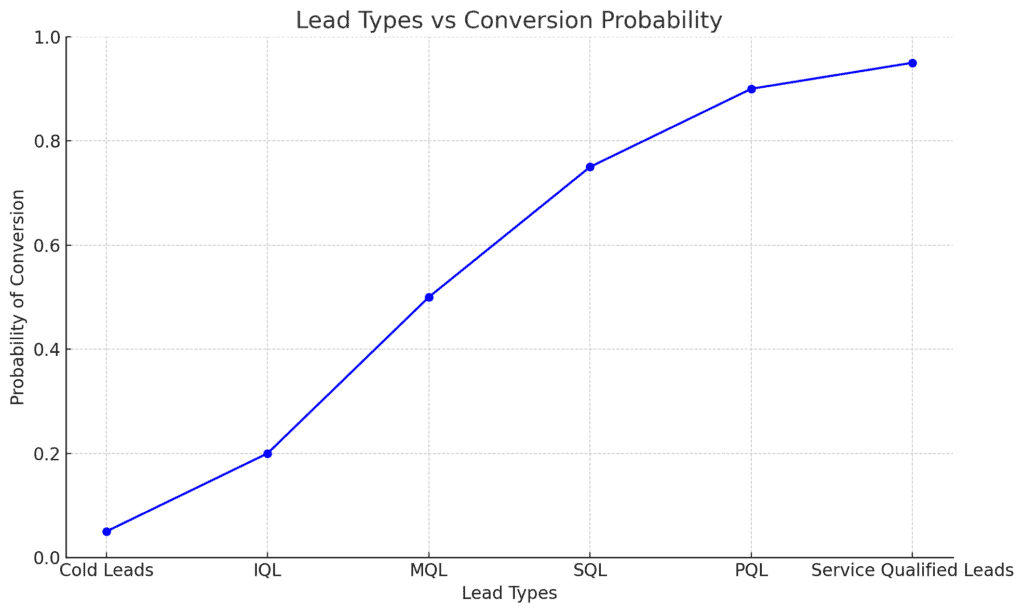Generating leads is crucial for the success of any business in today’s competitive landscape.
With the rapid evolution of online marketing, understanding how to attract and convert leads can make the difference between a thriving business and one that struggles to stay afloat.
This guide aims to provide you with practical insights and proven strategies to enhance your lead generation efforts. From leveraging social media and cold emails to understanding the importance of lead nurturing, we’ll explore various methods to help you effectively grow your client base.
Whether you’re a seasoned marketer or just starting, this comprehensive overview will equip you with the knowledge needed to boost your digital marketing campaigns and secure high-quality leads.
Introduction to Digital Marketing Lead Generation

Digital marketing encompasses a broad spectrum of strategies beyond just paid ads, crucial for effective lead generation.
SEO optimizes your website for higher search engine rankings, leveraging trust in search results to drive organic traffic.
Content marketing builds authority and trust by offering valuable information, creating a sense of reciprocity.
Social media marketing utilizes platforms to enhance brand awareness and engage users, with social proof influencing potential leads.
Email marketing offers personalized communication, fostering a sense of exclusivity.
PPC advertising drives immediate traffic with urgency and targeted offers, while affiliate marketing expands reach through credible third-party endorsements.
Each method taps into psychological influences, from trust and authority to urgency and social proof, making them powerful tools in a comprehensive digital marketing strategy.
Putting all digital marketing sources into a ready reference
| Digital Marketing Source | Description | Works Well For |
|---|---|---|
| SEO | Optimizing website for search engines | Organic traffic, long-term leads |
| Content Marketing | Creating valuable content | Authority, trust, nurturing leads |
| Social Media Marketing | Promoting on social media platforms | Brand awareness, engagement, leads |
| Email Marketing | Sending targeted emails | Direct communication, personalized offers |
| PPC Advertising | Paying for ads | Immediate traffic, targeted leads, short-term |
| Affiliate Marketing | Partnering with affiliates | Expanding reach, leveraging credibility |
| Influencer Marketing | Collaborating with influencers | Reaching niche audiences, enhancing trust |
| Webinars and Online Events | Hosting educational and engaging events | Lead generation, demonstrating expertise |
By understanding and utilizing these diverse digital marketing sources, businesses can create a robust lead generation strategy that drives sustained growth and success.
The Importance of Lead Generation in Digital Marketing
Lead generation is the lifeblood of any successful business, and using all digital marketing channels holistically can amplify your efforts. Each channel plays a unique role, and when used together, they create a powerful ecosystem that supports lead generation in nuanced ways.
Holistic Approach to lead generation using various Digital Marketing Channels
1. SEO and Content Marketing: The Foundational Duo
- SEO ensures your website is discoverable through organic searches, establishing long-term visibility. This visibility is crucial as it attracts users actively searching for solutions you offer.
- Content Marketing complements SEO by providing valuable information that draws in and engages your audience. High-quality content, such as blogs, whitepapers, and videos, not only educates potential leads but also positions your brand as an authority in your industry.
2. Social Media Marketing: Amplifying Reach and Engagement
- Social Media channels like Facebook, LinkedIn, and Instagram are excellent for building brand awareness and fostering community engagement. While these platforms may not always directly generate leads, they play a critical role in nurturing relationships and driving traffic to your website, where leads can be captured.
- Leveraging social proof through user-generated content and testimonials can enhance credibility, encouraging potential leads to take the next step.
3. Email Marketing: Personalized and Direct Communication
- Email Marketing is a powerful tool for nurturing leads through personalized communication. Segmented email campaigns tailored to different stages of the buyer’s journey can significantly increase conversion rates. Regular newsletters keep your audience informed and engaged, while targeted offers can drive action.
4. PPC Advertising: Immediate and Targeted Exposure
- PPC Advertising provides immediate visibility and attracts highly targeted leads. While SEO and content marketing work on long-term strategies, PPC ads ensure you capture leads quickly. The urgency created by limited-time offers in ads can compel users to act swiftly.
5. Affiliate and Influencer Marketing: Expanding Reach through Partnerships
- Affiliate Marketing allows you to partner with individuals or companies that promote your products to their audience, expanding your reach. This method leverages the credibility of affiliates to attract leads who might not have discovered your brand otherwise.
- Influencer Marketing operates similarly, using trusted voices in your industry to endorse your products. Influencers can provide authentic testimonials and reviews, swaying potential leads in your favor.
6. Webinars and Online Events: Demonstrating Expertise and Building Trust
- Webinars and Online Events are excellent for engaging potential leads directly. These events offer value through education and allow you to interact with your audience in real-time, answering questions and addressing concerns. This direct engagement helps build trust and positions your brand as an industry leader.
Integrated Strategy for Maximum Impact in leads
An integrated digital marketing strategy ensures that each channel supports the others, creating a cohesive lead generation funnel.
For instance, content created for SEO purposes can be repurposed for social media posts and email campaigns.
PPC ads can drive traffic to landing pages optimized with SEO best practices. Social media engagement can feed into email lists, and insights from email campaigns can inform content strategy.
By understanding the unique strengths of each digital marketing channel and how they interconnect, businesses can create a holistic lead generation strategy that maximizes impact and drives sustained growth.
| Digital Marketing Channel | Role and Benefits | Key Insights |
|---|---|---|
| SEO | Long-term visibility through search rankings | Attracts active searchers looking for solutions |
| Content Marketing | Provides valuable information and builds authority | Educates and engages potential leads |
| Social Media Marketing | Enhances brand awareness and engagement | Nurtures relationships, drives traffic |
| Email Marketing | Personalized and direct communication | High conversion rates through targeted offers |
| PPC Advertising | Immediate and targeted lead generation | Captures leads quickly with urgent offers |
| Affiliate Marketing | Expands reach through partnerships | Leverages third-party credibility |
| Influencer Marketing | Uses trusted voices to endorse products | Enhances trust and authenticity |
| Webinars and Online Events | Direct engagement and expertise demonstration | Builds trust and positions brand as an industry leader |
By leveraging these diverse channels in a coordinated manner, businesses can ensure a steady and sustainable flow of high-quality leads.
Types of Lead Generation in Digital Marketing

In digital marketing, leads can be categorized based on their engagement levels and the likelihood of conversion. Understanding these types helps businesses tailor their strategies to maximize conversion rates. Here’s a breakdown of the different types of leads along a spectrum, from the least engaged to the most engaged:
1. Cold Leads
- Description: Individuals who have had no prior interaction with your brand.
- Engagement: Low
- Conversion Probability: Low
- Example: Leads from purchased lists or cold email campaigns.
2. Information Qualified Leads (IQL)
- Description: Individuals who have shown initial interest by consuming content but haven’t provided contact information.
- Engagement: Moderate
- Conversion Probability: Low to Moderate
- Example: Blog readers, social media followers.
3. Marketing Qualified Leads (MQL)
- Description: Individuals who have engaged more deeply with your content and have provided contact information.
- Engagement: High
- Conversion Probability: Moderate to High
- Example: Subscribers to your newsletter, webinar attendees.
4. Sales Qualified Leads (SQL)
- Description: Individuals who have been vetted by the marketing team and are deemed ready for a direct sales approach.
- Engagement: Very High
- Conversion Probability: High
- Example: Leads who have requested a demo or pricing information.
5. Product Qualified Leads (PQL)
- Description: Individuals who have used your product (e.g., through a free trial) and shown strong interest in purchasing.
- Engagement: Extremely High
- Conversion Probability: Very High
- Example: Free trial users who frequently log in and use key features.
6. Service Qualified Leads
- Description: Existing customers who have indicated interest in additional services or upgrades.
- Engagement: Extremely High
- Conversion Probability: Extremely High
- Example: Current clients requesting information on premium services or products.
Spectrum of Lead Types and Engagement
| Lead Type | Description | Engagement Level | Conversion Probability |
|---|---|---|---|
| Cold Leads | No prior interaction | Low | Low |
| Information Qualified Leads (IQL) | Initial content consumption | Moderate | Low to Moderate |
| Marketing Qualified Leads (MQL) | Deeper content engagement, provided contact info | High | Moderate to High |
| Sales Qualified Leads (SQL) | Vetted for readiness by marketing | Very High | High |
| Product Qualified Leads (PQL) | Used product, shown purchase interest | Extremely High | Very High |
| Service Qualified Leads | Existing customers interested in upgrades | Extremely High | Extremely High |
Engagement and Conversion Insights
- Cold Leads: Require significant nurturing through content and engagement to move them further along the spectrum.
- IQLs: Benefit from targeted content to encourage deeper interaction and transition to MQLs.
- MQLs: Engage with personalized marketing efforts to prepare them for a sales conversation.
- SQLs: Ready for direct sales approaches, making them prime candidates for conversion.
- PQLs and Service Qualified Leads: Often have the highest conversion rates due to their direct experience with your product or service.
By understanding and effectively managing these different types of leads, businesses can optimize their digital marketing strategies to ensure a steady and sustainable flow of high-quality leads, ultimately driving growth and success.
Here is the graph that illustrates the spectrum of lead types against their probability of conversion.
The x-axis represents the different lead types, arranged from lowest to highest conversion probability, while the y-axis shows the probability of conversion.

Digital Marketing Leads Examples

Understanding the types of leads generated from various digital marketing sources can help businesses tailor their strategies to attract high-quality prospects. Each source can yield unique leads with distinct attributes, which can significantly impact your marketing efforts. Here are detailed examples of leads from different digital marketing channels:
1. SEO (Search Engine Optimization)
- Example Lead: An individual who finds your website through a Google search for “best project management software.”
- Lead Attribute: High intent, as they are actively searching for solutions. These leads are often in the consideration or decision stage, making them more likely to convert with the right information.
2. Content Marketing
- Example Lead: A visitor who downloads an in-depth eBook on “10 Strategies for Effective Remote Work” from your blog.
- Lead Attribute: Engaged and interested in the topic. These leads are typically in the awareness or consideration stage and can be nurtured with additional content to move them further down the funnel.
3. Social Media Marketing
- Example Lead: A user who follows your company on LinkedIn after engaging with a post about industry trends.
- Lead Attribute: Interested in your industry and brand. These leads are valuable for building long-term relationships and can be nurtured through consistent, engaging content.
4. Email Marketing
- Example Lead: A recipient who clicks on a link in your newsletter to sign up for a free trial.
- Lead Attribute: Highly engaged and already familiar with your brand. These leads are often in the consideration stage and can be converted with targeted offers and personalized follow-ups.
5. PPC Advertising (Pay-Per-Click)
- Example Lead: A person who clicks on your Google ad for “affordable CRM software” and fills out a contact form on your landing page.
- Lead Attribute: Immediate need and high intent. These leads are actively looking for solutions and are likely to convert quickly with the right sales approach.
6. Affiliate Marketing
- Example Lead: A visitor who clicks on a referral link from a popular blog reviewing your product.
- Lead Attribute: Trusting the affiliate’s recommendation. These leads come with a certain level of pre-built trust, making them more inclined to consider your product or service seriously.
7. Influencer Marketing
- Example Lead: A follower who signs up for your newsletter after watching an influencer’s unboxing video of your product on Instagram.
- Lead Attribute: Highly influenced by the endorsement of the influencer. These leads value social proof and can be persuaded through authentic testimonials and reviews.
8. Webinars and Online Events
- Example Lead: An attendee who registers for a webinar on “Future Trends in Digital Marketing.”
- Lead Attribute: Interested in learning and staying updated with industry trends. These leads are typically in the awareness stage but can be nurtured to move towards consideration and decision stages.
Summary Table of Digital Marketing Leads Examples
| Digital Marketing Source | Example Lead | Lead Attribute |
|---|---|---|
| SEO | Found website via Google search for “best CRM software” | High intent, in consideration or decision stage |
| Content Marketing | Downloads eBook on “Effective Remote Work Strategies” | Engaged, in awareness or consideration stage |
| Social Media Marketing | Follows company on LinkedIn after engaging with a post | Interested in industry and brand |
| Email Marketing | Clicks newsletter link to sign up for a free trial | Highly engaged, in consideration stage |
| PPC Advertising | Clicks Google ad and fills out contact form | Immediate need, high intent |
| Affiliate Marketing | Clicks referral link from a blog review | Trusts affiliate’s recommendation |
| Influencer Marketing | Signs up for newsletter after watching an unboxing video | Influenced by endorsement, values social proof |
| Webinars and Online Events | Registers for webinar on “Digital Marketing Trends” | Interested in learning, in awareness stage |
By leveraging these diverse sources, businesses can attract a wide range of leads with varying attributes. Tailoring your approach to each type of lead will enhance your ability to convert them into loyal customers, ultimately driving growth and success.
Social Media Strategies for Lead Generation
Generating leads through social media can be highly effective, even without a budget for paid advertising.
Key strategies that work well for free involve leveraging organic reach, engaging content, and active community participation. Start by optimizing your social media profiles to clearly convey your brand’s value proposition.
Use keywords relevant to your industry to enhance discoverability. Regularly posting high-quality, engaging content is crucial; this includes informative articles, visually appealing images, and videos that resonate with your target audience.
Encouraging user-generated content, such as reviews and testimonials, not only builds credibility but also increases engagement through social proof. Actively participating in industry-related groups and forums can position you as a thought leader and attract leads interested in your expertise.
Hosting live sessions, such as Q&A or webinars on platforms like Facebook Live or Instagram Live, can also draw in potential leads by offering immediate value and direct interaction.
Additionally, using social media to share behind-the-scenes glimpses of your business and success stories can humanize your brand, making it more relatable and trustworthy.
Engaging with your audience by responding to comments, questions, and messages promptly further strengthens relationships and fosters a sense of community, encouraging followers to become leads organically.
Using Cold Email for Lead Generation

Cold emailing, when executed correctly, can be a powerful lead generation strategy for small businesses. The key principles of successful cold emailing revolve around personalization, value, and strategic follow-ups.
Learn all about cold emails in the detailed article.
Personalization
Personalization is paramount in cold emailing. Generic emails are likely to be ignored or marked as spam. Start by researching your target recipient thoroughly.
Use their name, mention specific details about their business or industry, and explain why you’re reaching out to them specifically. Personalizing your email shows that you’ve done your homework and are genuinely interested in offering a solution tailored to their needs.
Value Proposition
Clearly articulating your value proposition is crucial. Your email should quickly convey the benefits of your product or service and how it can solve a specific problem for the recipient. Avoid lengthy explanations; instead, focus on concise, impactful messaging. Highlighting unique selling points and including case studies or testimonials can add credibility and persuade the recipient to take the next step.
Compelling Subject Line
The subject line is the first thing your recipient will see, so it needs to be compelling and relevant. A well-crafted subject line can significantly increase your open rates. Keep it short, personalized, and hint at the value within the email. Avoid clickbait; instead, aim for a subject line that intrigues and conveys authenticity.
Clear Call to Action
Your email should include a clear and specific call to action (CTA). Whether it’s scheduling a call, downloading a resource, or visiting your website, make sure the CTA is easy to follow and aligned with the recipient’s needs. The CTA should create a sense of urgency without being overly aggressive.
Follow-Up Strategy
A well-planned follow-up strategy is essential. Often, recipients might miss the first email or need a reminder to take action. Schedule follow-ups at appropriate intervals, ensuring they are polite and persistent without being intrusive. Each follow-up should add value, whether by providing additional information, answering potential questions, or reiterating the benefits of your offer.
Legal Compliance
Lastly, ensure that your cold email strategy complies with legal requirements, such as the CAN-SPAM Act. Include an opt-out option and respect privacy laws to maintain credibility and trust.
Lead Nurturing: Building Relationships for Success
Lead nurturing is an essential component of any successful digital marketing campaign, and understanding customer psychology is crucial in this process.
At its core, lead nurturing involves developing relationships with potential customers at every stage of the sales funnel, and comprehending psychological triggers can significantly enhance your efforts.
Understanding Customer Needs and Pain Points
The first step in effective lead nurturing is to understand your customers’ needs and pain points. By identifying what challenges they face and what solutions they are looking for, you can tailor your communications to address these specific issues.
This personalized approach makes leads feel understood and valued, fostering a sense of trust and connection.
Building Trust Through Consistent Communication
Consistent and thoughtful communication is key to building trust. Regular touchpoints, such as informative emails, engaging content, and personalized messages, help keep your brand top-of-mind.
Psychological studies show that familiarity breeds liking; thus, the more your leads interact with your brand, the more likely they are to develop a positive association with it.
Utilizing Reciprocity to Foster Engagement
Reciprocity is a powerful psychological principle in lead nurturing. When you offer something of value to your leads—be it a free eBook, a helpful webinar, or exclusive insights—they feel a natural inclination to reciprocate.
This can manifest as increased engagement, a willingness to provide more information, or a readiness to move forward in the sales funnel.
Creating a Sense of Urgency
Creating a sense of urgency can be an effective strategy in lead nurturing. Limited-time offers, countdowns, and exclusive deals tap into the fear of missing out (FOMO), prompting leads to take action more quickly.
However, it’s important to balance urgency with authenticity to maintain trust and avoid appearing pushy.
Personalization and the Halo Effect
Personalization plays a significant role in lead nurturing. Tailoring your communications based on the lead’s behavior, preferences, and interactions with your brand makes them feel special and appreciated.
The halo effect—a cognitive bias where positive impressions in one area influence overall perception—suggests that personalizing even small details can enhance the overall perception of your brand.
Social Proof and Testimonials
Leveraging social proof is another effective psychological tactic. Testimonials, case studies, and user-generated content demonstrate that others have benefited from your product or service, making potential leads more comfortable and confident in their decision to engage with your brand.
Seeing others’ positive experiences reduces perceived risk and encourages trust.
Empathy and Active Listening
Empathy is a critical component of successful lead nurturing. By actively listening to your leads’ concerns and responding thoughtfully, you show that you genuinely care about their needs.
This builds emotional connections and demonstrates that your brand is not just focused on selling but on providing real value.
Example of a Lead Nurturing Email Sequence
Email 1: Welcome and Introduction
Subject: Welcome to [Your Company], [Lead’s Name]!
Hi [Lead’s Name],
Thank you for joining our community! We’re excited to have you on board. Here’s a free eBook on [Topic] that I think you’ll find valuable.
[Download Link]
Best regards,
[Your Name]
Email 2: Providing Value
Subject: How [Your Product] Can Solve [Specific Problem]
Hi [Lead’s Name],
I noticed you’re interested in [Topic]. Here’s a webinar where we discuss how to tackle [Specific Problem] effectively.
[Webinar Link]
Looking forward to your thoughts!
Best regards,
[Your Name]
Email 3: Creating Urgency
Subject: Limited-Time Offer Just for You, [Lead’s Name]
Hi [Lead’s Name],
We’re offering an exclusive discount on [Product/Service] for a limited time. Don’t miss out!
[Discount Link]
Best regards,
[Your Name]
Email 4: Building Trust
Subject: Hear from Our Satisfied Customers
Hi [Lead’s Name],
Wondering if [Product/Service] is right for you? Here’s what our customers have to say.
[Testimonial Link]
We’re here to help if you have any questions.
Best regards,
[Your Name]
By integrating these psychological principles into your lead nurturing strategy, you can build strong, lasting relationships with your leads, ultimately leading to greater conversion rates and business success.
Understanding and addressing the psychological needs and behaviors of your leads ensures that your nurturing efforts are not only effective but also genuine and impactful.
Buying Leads for Digital Marketing: Pros and Cons

Buying leads is an inherent part of many businesses’ digital marketing strategies. It can provide a quick influx of potential customers, but it also comes with its own set of challenges.
Understanding the benefits and disadvantages of this process, and knowing how to turn potential downsides into advantages, can help businesses make the most of purchased leads.
Benefits of Buying Leads
- Immediate Access to Prospects
- Purchasing leads allows businesses to quickly acquire a list of potential customers, bypassing the time and effort required to generate leads organically.
- Targeted Marketing
- Many lead providers offer segmentation options, allowing businesses to purchase leads that match specific criteria, such as demographics, interests, or behaviors.
- Scalability
- Buying leads can help scale marketing efforts rapidly, especially during peak sales periods or when launching new products or services.
Disadvantages of Buying Leads
- Quality Concerns
- Purchased leads may not always be of high quality. They might not be genuinely interested in your product or service, leading to low conversion rates.
- Cost
- Buying leads can be expensive, and there is no guarantee of a return on investment (ROI).
- Potential for Spam Complaints
- Contacting individuals who have not opted in to receive communications from your business can lead to spam complaints, damaging your sender reputation.
Turning Disadvantages into Advantages
Long-Term Nurturing
Purchased leads might not convert immediately, but with a well-planned lead nurturing strategy, you can build relationships over time. Use personalized email sequences to engage leads and move them through the sales funnel.
Building Awareness through Drip Campaigns
Drip campaigns can help maintain regular contact with purchased leads, gradually building brand awareness and trust. By providing valuable content, you can transform initial skepticism into interest.
Enhancing Lead Quality with Data Enrichment
Investing in data enrichment services can improve the quality of purchased leads by adding relevant information such as social profiles, purchase history, and other behavioral data. This allows for more personalized and effective marketing efforts.
Pros and Cons Table
| Aspect | Pros | Cons | Turning Disadvantages into Advantages |
|---|---|---|---|
| Immediate Access to Prospects | Quick acquisition of potential customers | May include uninterested leads | Use immediate access to start nurturing relationships |
| Targeted Marketing | Ability to select specific criteria | Quality may still vary within target segments | Refine targeting and segment further based on engagement |
| Scalability | Rapidly scale marketing efforts | High cost without guaranteed ROI | Focus on cost-effective nurturing strategies |
| Quality Concerns | – | Low conversion rates due to lack of genuine interest | Implement thorough nurturing and follow-up processes |
| Cost | – | Expensive with uncertain returns | Track ROI and refine lead purchasing strategies |
| Spam Complaints | – | Risk of damaging sender reputation | Ensure compliance and provide opt-out options |
Example of a Lead Nurturing Drip Campaign
Day 1: Welcome Email
Subject: Welcome to [Your Company], [Lead’s Name]!
Hi [Lead’s Name],
Thank you for your interest in [Your Company]. We’re excited to share more about how our [Product/Service] can benefit you.
Best regards,
[Your Name]
Day 3: Educational Content
Subject: How [Your Product] Solves [Specific Problem]
Hi [Lead’s Name],
Here’s a helpful guide on how [Your Product] can help you overcome [Specific Problem].
[Download Link]
Best regards,
[Your Name]
Day 7: Testimonial or Case Study
Subject: See How Others Have Benefited from [Your Product]
Hi [Lead’s Name],
Wondering if [Your Product] is right for you? Check out this case study from one of our satisfied customers.
[Link to Case Study]
Best regards,
[Your Name]
Day 14: Limited-Time Offer
Subject: Special Offer Just for You, [Lead’s Name]
Hi [Lead’s Name],
We’re offering an exclusive discount on [Product/Service] for a limited time. Don’t miss out!
[Discount Link]
Best regards,
[Your Name]
By understanding the pros and cons of buying leads and implementing strategies to mitigate the disadvantages, businesses can effectively integrate purchased leads into their overall marketing strategy.
Long-term nurturing and thoughtful engagement can transform initial challenges into opportunities for growth and customer acquisition.
